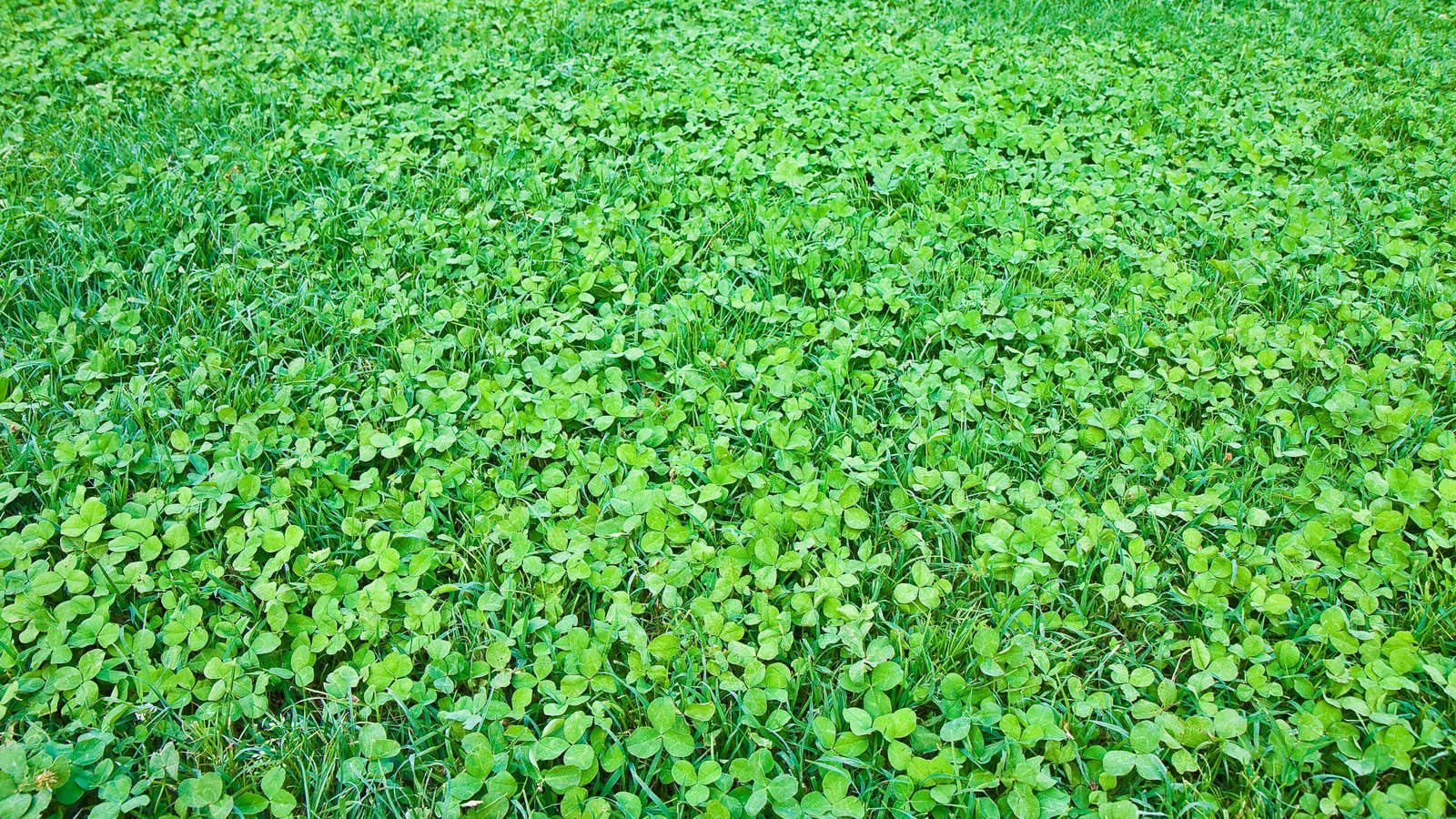Grow a Clover Lawn That You Almost Never Have to Mow

If you have grass on your property, you already know how lame they are . Grass is fragile, fickle and expensive to care for. Lawns suck up your time and energy and are pretty much an environmental disaster in many ways, from water use to loss of natural habitat, and difficult to maintain. This is why there is a slow uprising against grass lawns. Recently, an alternative to the traditional grass turf has emerged on social media: clover turf.
If you’re an old-school lawn lover who’s spent his life fighting clover, you might think the world has gone crazy. But there are some very good reasons why you should consider inviting clover into your lawn or just letting clover be your lawn.
Pros of Clover
Clover – all 300 of its species – are flowering legumes that most lawn lovers consider the enemy because they are aggressively aggressive. But back in the early 20th century, most lawns actually included white clover in their mix—and it wasn’t until the advent of effective herbicides that the perfect lawn became a turf grass monoculture. Clover, long considered a weed, is now making a comeback for many really good reasons:
- It’s more environmentally friendly than grass. Clover is a cool thing. Because it’s a legume, it actually draws nitrogen and other elements into the soil, so you don’t need to fertilize or aerate your lawn like you would with a grass lawn – in fact, if you mix clover into your grass lawn, you’ll notice the yellow spots disappear when clover restores the health of your grass. It also uses a lot less water.
- It attracts pollinators. Bees love clover and will flock to your lawn as soon as it blooms. This will also attract other creatures such as rabbits.
- It’s easier to maintain. Not only does a clover lawn require less water, it also requires much less mowing – you can mow your clover lawn as little as 2-4 times a year (less often if you like a wilder yard). Plus, it stays green no matter what happens, unlike your sad, yellow, straw-like grass—even if your dog pees on clover, it won’t discolour like grass. Clover is so invasive that it usually defeats weeds, so you don’t have to do much in terms of weeding.
- It is cheap. First of all, if you’ve been trying to get rid of clover in your lawn, that means you already have clover in your lawn – give in and let it grow and you’ll have a free clover lawn. Should I buy clover seeds instead? Set aside small bills because you can get 4,000 square feet of clover cover for about $4 .
- They feel good. It’s really nice to walk barefoot on the clover lawn.
Cons of clover lawns
So clover is great! Surely there are downsides to consider when you contemplate all the free time on the weekends not spent tending to an environmentally damaging lawn?
The main disadvantage of clover turf is durability. Whatever you say about grass, you can walk on it, have a picnic on it, play touch football, and it will bounce back like nothing happened. Clover is less stable when it comes to foot traffic, and you will end up with bare patches if you have a lot of activity in your clover lawn.
Clover is also a relatively short-lived perennial, so you will need to repot it every 2-3 years. Luckily, it’s pretty easy .
Clover is a great alternative to grass or a great addition to a grassy lawn. It’s better for the planet, easier to maintain, and harkens back to the less conformist lawn culture that flourished before formulaic divisions ruled our home aesthetics. Throw in a few dollars on clover seeds and break free from the grassy weekend prison.